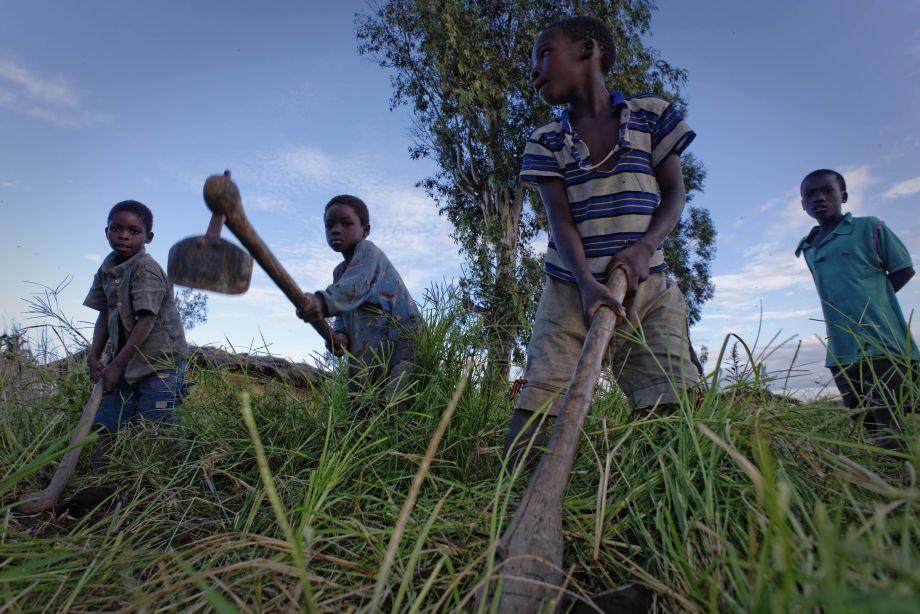The world fell short of its goal to eliminate the worst forms of child labor by 2016. Now, amid conflicts, disasters and an “unprecedented scale of migration and forced displacement,” the UN’s International Labor Organization (ILO) says that progress has been far too slow to achieve the international community’s current goal: to eradicate child labor in all its forms by 2025 and forced labor, modern slavery and human trafficking by 2030. (For those keeping score, this is target 7 of Sustainable Development Goal 8)
But recognizing the problem is the first step to solving it. So, a couple weeks ago, nearly 2,000 delegates from 190 countries gathered in Argentina to “take stock of the progress made” since the last Global Conference on the Sustained Eradication of Child Labor in 2013. At the end of the three-day meeting, the delegates signed the Buenos Aires Declaration, in which they pledged to “accelerate efforts.”
Although some praised the declaration for laying out “concrete steps” toward achieving Sustainable Development Goal 8.7, others said the conference “left many declarations of good intentions but nothing to celebrate.”
According to the ILO’s latest report, published ahead of the conference, the number of girls and boys between ages 5 and 17 engaged in child labor dropped by about 16 million (from 168 to 152 million) from 2012 to 2016. But that’s only one-third of the progress made in the previous four years, when estimates fell by 47 million from 2008 to 2012.
Of the 152 million girls and boys still engaged in child labor, nearly half (73 million) are doing hazardous work that “directly endangers their health, safety, and moral development.” About 4 million children are subject to forced labor along with 21 million other people. Hazardous and forced labor are considered child labor in its worst forms.
At the current rate of percentage point progress, 121 million children would still be engaged in child labor in 2025, and 52 million of them would be in hazardous work. Even accelerating to the fastest pace achieved to date, from 2008 to 2012, would leave almost 100 million children in child labor. The steady decline is positive, but the slowdown isn’t a good sign, especially when progress already isn’t fast enough.
Much of the focus for reform in recent years has been on transnational corporations. For example, Amnesty International has called out big-name electronics and electric vehicle companies, including Microsoft, Samsung and GM, for making little to no effort to eliminate child labor and other human rights abuses from their cobalt supply chains in the manufacturing of lithium batteries.
But according to the ILO, 72 percent of child labor is performed in various subsectors of agriculture, and 42 percent of that is hazardous, meaning that “it often has nothing to do with employers, but with families,” ILO Director-General Guy Ryder said.
It’s one thing to pressure transnational corporations that depend on positive reputations for profit to do more. It’s another to overhaul rural economies so that poor rural families no longer need to depend on their children’s labor.
“We understand that children who work have no other option and that we should not criminalize but protect them and make sure that the conditions in which they perform tasks do not put them at risk or prevent their education,” Anne Jacob, whose Germany-based Kindernothilfe organization participated in the ILO research, told Inter Press Service.
Making it even harder to bring down the numbers is the “unprecedented scale of migration and forced displacement” spurred by conflicts and disasters. These issues all raise the number of people who are at risk of becoming victims of child labor and forced labor.
The problems of child labor and forced labor do not occur in a vacuum of supply chains. Therefore, in addition to enforcing labor laws, the delegates committed to efforts such as promoting rural development, expanding access to education, improving employment opportunities for adults and youth and protecting migrants – aims which are also encompassed in the SDGs.
Some complained that the 29 broad commitments left a sensation that solutions are still far away. But the ILO report laid out four crucial pillars to policy responses that should be tailored to local economies, cultures and social conditions: legal standards and regulation, labor markets, social protection and education.
“We know what to do, and there are no excuses not to do so,” Ryder said. “The future is going to be a world free of forced labor and child labor.”
